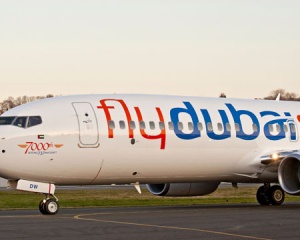Routes 2012: Rapid growth in Middle East low-cost aviation
 flydubai is the newest, largest low-cost carrier in the Middle East
flydubai is the newest, largest low-cost carrier in the Middle East The Middle East’s low-fare sector has demonstrated a dramatic pace of growth in the last decade which shows no signs of abating, according to OAG.
Low-Cost Carriers have grown at an average annual rate of 52 per cent in the last decade, compared to traditional carriers who have grown at an average rate of seven per cent annually.
Low-cost carriers in the Middle East have delivered consistently higher growth than LCCs in any other region globally in the last ten years.
An OAG market analysis report, being distributed at the World Route Development Forum in Abu Dhabi, discusses how the aviation market in the Middle East has become one of the fastest growing in the world.
The report explores how the Middle East’s low-fare sector is growing apace, developing both a strong intra-regional market and expanding services to and from the Middle East.
The Low-cost carriers now account for 20 per cent of all flights within the region.
Rob Shaw, director of Analytics at OAG, said: “Although the Middle East’s economy was affected by the global recession, it suffered to a lesser degree than other regions.
“The Middle East’s aviation market is one of the fastest growing regions in the world for scheduled flight capacity. Seat capacity has grown from the Middle East over the last decade with an average annual rate of ten per cent - the highest rate globally.”
Three main low-cost carriers dominate in the region, serving multiple market segments.
Air Arabia, Jazeera Airways and Flydubai serve 79 destinations and operate nearly 1,000 weekly departures between them.
In 2003, there were low-cost services to just six destinations, all operated by Air Arabia.
Established in 2004, Jazeera Airways was the first non-government owned airline in the Middle East.
Flydubai launched in 2009 and by redefining the low-cost model by offering the product segmentation that has evolved in Europe and North America, is now the largest low-cost carrier in the Middle East.
Shaw continued: “The emergence of carriers who are not afraid to differentiate their product offering beyond the classic low-cost model will result in a continually developing market for the Middle East, but the region still faces many challenges going forwards.
“The Middle East does not currently have secondary airports which would offer a lower cost base for low cost carriers.
“While some progress is being made towards a more liberal approach to open skies agreements and travel visa restrictions, there is still a long way to go.
“There are several big airport expansion projects underway and the region also needs to work towards matching infrastructure development to the pace of network development and aircraft delivery.
“Although the region’s airspace is not yet crowded, large areas of airspace are still under military control, so air space capacity does need to be monitored.”

